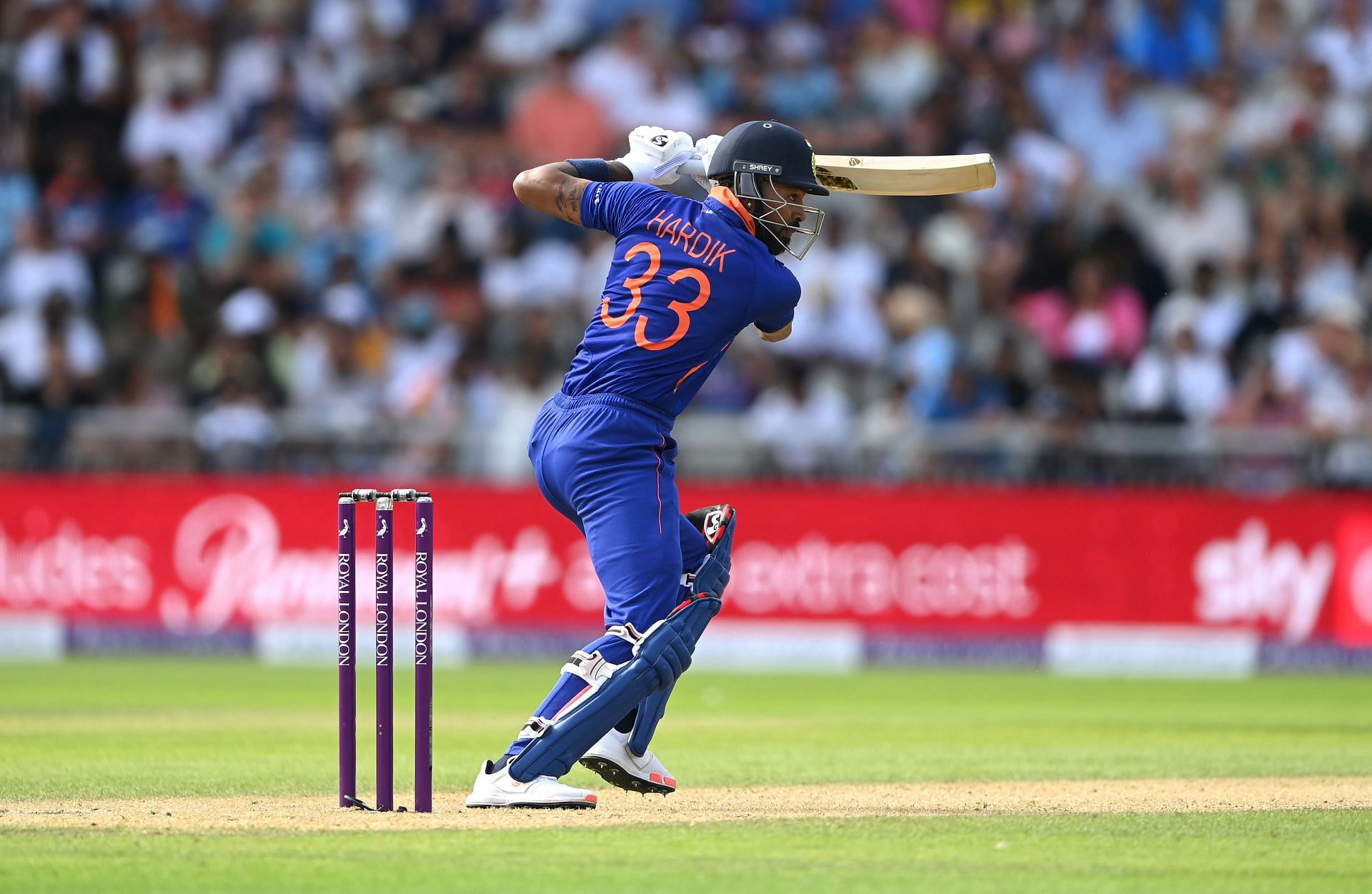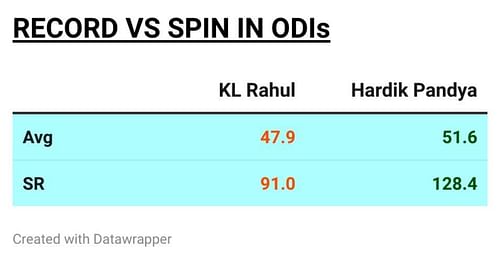
Is Hardik Pandya the ideal finisher for India in ODIs?
India recently completed a 6–0 swipe across two ODI series against Sri Lanka and New Zealand combined. This was the first time in the last 10 years that India have played six home ODIs in a month.
There have been a lot of positives to take home for the hosts from these six games, including but not limited to the coming of age of Shubman Gill, the relentless consistency of Mohammed Siraj, and stalwarts Rohit Sharma and Virat Kohli notching up centuries.
Hardik Pandya had a decent few games too, scoring 132 runs in four innings at an average of 33 in addition to taking five wickets. Now, while those numbers don’t warrant much concern at face value, a deeper dive into Hardik’s batting over the last year or so will bring up some trends that might be worth looking into, especially given that he is India’s designated finisher in ODIs.
Hardik’s shift in the template
Since taking up the captaincy of Gujarat Titans (GT) in IPL 2022, Hardik has brought a major shift in his batting template. He started to bat higher up the order with GT and played the anchor role for them with good effect. Eventually, he was promoted to No. 5 in the Indian T20I team and has preferred to take his time there as well. Naturally, that shift in mindset has shown in ODIs.
Prior to 2022, his ODI career strike rate stood at 116.9. In the last year, his strike rate has fallen to 96.7. Granted, a sample size of six innings isn’t a lot, but in that time frame, he has faced 240 deliveries, which isn’t low enough to not be able to identify any trends. What is more concerning is how this fall in his strike rate has come about.
Before 2022, Hardik used to hit a six every 20.37 balls in ODIs. Guess what that number has shot up to since last year. Not 30, not 40, but exactly 60! He has hit just four sixes out of the 240 deliveries he has faced in ODIs since 2022, with three of those coming in the third ODI against New Zealand at the Holkar Stadium, a ground known for its excessively short boundaries.
The trend has been similar in T20Is too - 11.81 balls per six before 2022 has become 14.8 balls per six since. In fact, his last memorable T20I knock also came at a venue with short square boundaries - the Adelaide Oval in Australia.
The ideal ODI finisher
What are the qualities one would look for in an ideal ODI finisher? An overall high strike rate, let’s say above 150, the ability to access most parts of the ground, and a good game against express pace.
The first batter that comes to mind who ticks all the boxes is England's Jos Buttler. Since 2019, he is the only ODI batter to have a strike rate of more than 200 at the death (minimum 100 balls faced). His range-hitting abilities are well known, he can play the ramps as and when required, and he is exceptional against express pace as well (strike rate of 196.55 against fast bowlers at the death since 2019).
Others who have been doing well and have been ticking most of the above boxes include Glenn Maxwell, Michael Bracewell, Dasun Shanaka, David Miller, and Jimmy Neesham to name a few. Where does Hardik fit in?
His career strike rate of 136.48 at the death in ODIs isn’t anything to boast about for a designated finisher. In fact, since his debut, that is the 30th-best strike rate at the death in ODIs among batters who have faced at least 100 balls.
Yes, his strike rate has improved to 155.6 if you look at it since 2019, but his game against express pace and especially against hard lengths has always left a lot to be desired. His career strike rate against pacers at the death has been a mere 111.1, and it has barely improved to 134.78 since 2019, which again, is the 29th best among batters who have faced at least 25 balls against fast bowlers at the death in this period.
Can India afford to look beyond Hardik?
Despite all the issues mentioned above, Hardik still continues to be the best batter among all the all-rounders India have right now. Ravindra Jadeja comes a close second, but he is nowhere near as proficient in attacking spin as Hardik.
Axar Patel’s batting has improved by leaps and bounds, yet, the No. 6 is one spot too high for him even now. Washington Sundar hasn’t set the world on fire with his white-ball batting so far, and Shahbaz Ahmed is untested with the bat at the highest level.
Plus Hardik’s bowling has evolved to a great extent and has made him indispensable to the balance of the ODI XI. So should the Indian management stick to Hardik at six and hope that he comes good with the bat in a manner the No. 6 spot demands? They don’t necessarily have to.
A left-field solution
Hardik’s strike rate at the death in ODIs since 2019 is the sixth-best in the world among batters who have faced more than 100 balls. Guess who is just above him - KL Rahul with a strike rate of 162.07. Rahul has been doing really well in the middle order since the last World Cup, especially at No. 5.
So while there would be a natural reluctance to mess with his batting order for the umpteenth time, it would make a lot of tactical sense to get Hardik up to five and push Rahul down to six. There are a number of issues it can solve.
At No. 5, Hardik will get to face more spin. Here is a comparison of Rahul’s and Hardik’s numbers against spin in ODIs:

Hardik’s average and strike rate against spin are both higher than Rahul’s. In the middle overs of a home World Cup, if India is able to capitalize against opposition spin attacks, it would place them in a much better position to win matches.
Shreyas Iyer and Hardik at No. 4 and 5, respectively, would be ideal for that. Also, it was mentioned earlier that Hardik’s strike rate against pacers at the death is the 29th best since 2019. No prizes for guessing whose strike rate is the best - KL Rahul — with a whopping 218.52 runs per 100 balls.
Rahul’s all-round game against pace will keep him in better stead at the death than Hardik, and adaptability has always been one of Rahul’s biggest strengths. He can be relied upon to make the shift from No. 5 to 6 without much trouble.
This management has shown a penchant for moving out of their set template and making tactical changes once in a while. Whether they try this one out or not remains to be seen.
The fact that Hardik hasn’t been outright poor with the bat might make them hesitant to implement this, but it has the potential to optimize the use of resources in the top six and make this already strong batting line-up even stronger, without any change of personnel.